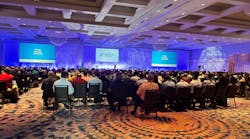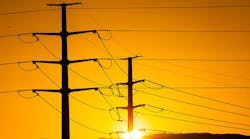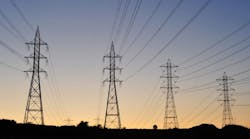I had the privilege of attending this year’s Southeastern Electric Exchange in Hollywood, Florida, for the first time this past June. Our late technical editor, Vito Longo, used to attend every year and loved it, and now I know why. It is all about southeastern utilities sharing with one another: their successes and failures, their best practices and their ideas and predictions. The power delivery industry is changing so fast that these collaborations are more important than ever. The event covered distribution, substations, transmission, right-of-way, and generation needs continue to be part of the conversation as our nation moves to a more diverse mix of energy sources.
The cool thing about S.E.E. though, is everything is open for healthy debate and discussion. How are we going to move forward if we don’t allow differing opinions, experiences and expertise to enter the discussion? The opening general session speakers set the tone, to a certain extent, for the exchange of ideas. Jack Uldrich, a global futurist, session one speaker, struck an optimistic, encouraging tone, saying that the “future depends on the electric utility industry.”
He mentioned several exciting technological projects utilities are involved with around the nation: Dominion’s offshore wind, Xcel Energy’s iron-air battery system, Duke’s microgrid at Camp LeJeune.
“We no longer live in linear times; we live in exponential times,” he said. Some of his speech was not unique to the utility industry, as he is more of a generalist, but his reassurance about the question of AI taking over everyone’s jobs resonated with the audience. “It’s easy to imagine the jobs that will go away, but it’s hard to imagine those jobs that don’t yet exist. As long as there are problems in the world, there will be jobs.” With Chat GPT being introduced this past November, AI has been one of the bigger news stories this spring. Of course the utility industry has already been using AI for a while in different forms, and I only see our industry as benefiting from its advancements and applications.
The session two speaker introduced a more cautionary tone. Robert Bryce is author of A Question of Power: Electricity and the Wealth of Nations, and the creator and host of the Power Hungry podcast. Although Bryce contended he wasn’t Democrat or Republican, he was not afraid to share his opinion on politics and institutions. He opened his presentation describing a recent tour he took of the Fukushima power plant and how Japan is not concerned with climate change like the United States is. It is concerned about “energy security.” Japan is now planning to build as many as 22 new coal-burning power plants after having to effectually shut down its nuclear power after that Fukushima disaster.
Bryce’s message was that our electricity system is a marvel, and is crucial to civilization and modernism, yet we are facing some difficult times with aggressive decarbonization goals, and subsequently, more rules and regulations. There are several challenges to meeting these goals even if we wanted to: supply chain issues; batteries that aren’t quite as scalable as they need to be yet; siting, permitting and ROI for renewables. When he mentioned an irrational fear of radiation in his introduction, though, I could see that he approved of nuclear power being a viable option for energy reliability and security. I did have to agree with him when he said “Every system depends on the grid. Don’t take it lightly.”
Project Awards
In keeping with the exchange of ideas and best practices, S.E.E. presents project awards, which T&D World loves to see because utility projects is our favorite subject. Each award winner was able to present their projects and technology in a special session. I attended the Industry Excellence Award Winner for Distribution, awarded to Alabama Power’s Green Valley Distribution Undergrounding Project. Holly Joiner, central engineering underground coordinator, and Adam Carr, grid investment manager, for Alabama Power presented the experiences. The Central Engineering Underground Program uses system outage and maintenance cost data to identify existing overhead distribution lines that would be beneficial to underground. The project consisted of installing an underground distribution system serving 101 active meters across 100 separate properties, needing 100 separate easements. The design and construction teams navigated many limitations such as property easement constraints, tight workspaces, various challenging terrains and converting customer service entrances. About 8,000 feet of inaccessible overhead distribution line built in the 1960s was removed from a vegetation-dense right of way in the rear-lot customer properties. Look for a more in-depth article on this project in a future issue of T&D World.
Other winners included:
- Environmental Category: Florida Power & Light’s North Florida Resiliency Connection
- Customer Service and Billing: FPL’s Appointment Tracker and Self-Scheduling Standy Appointments
- Substation: FPL’s A Violet by Any Other Name (Vero Beach Substation)
- Supply Chain: American Electric Powers’ Emergency Restoration Structures Kitting Program
- Transmission Line: PPL Electric Utilities’ Dynamic Line Ratings
- Safety: Exelon/Baltimore Gas & Electric: Energy-Based Safety
- Training: FPL’s New Hire Engineer Training and University Partnership Program
As Jack Aldrich stated in the opening session, the future depends on the electric utility industry and based on these winners, I would say the future is in good hands.


